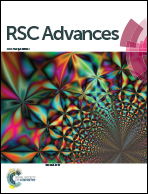Tuning the properties of cobalt ferrite: a road towards diverse applications
Abstract
Cobalt ferrite has gained great scientific interest because of its unique properties and exceptionally promising applications. A large number of synthetic methods, such as sol–gel auto-combustion method, co-precipitation method, ball milling method, microemulsion method, polyol method, etc. have been used for its synthesis. Synthetic methodologies and heat treatment given to the sample strongly influence the particle size of the synthesized ferrite, which in turn determines its properties. In addition, the properties of cobalt ferrite can be altered by different chemical modifications such as substituting one or more ions from the lattice with some other metal ion, modifying the reaction conditions, compositing with different inorganic matrices etc. The most prominent influence on the properties of ferrites is exerted by variation in cation distribution. Among all the factors the major influence on the cation distribution is laid by doping. Guest metal ions according to their site preference occupy different lattice sites, thereby, changing the structural, magnetic, electrical and the catalytic properties of cobalt ferrite. In this review, we summarize the significant developments involving modifications in synthesis and properties of cobalt ferrite. This review also highlights the advances in the applications of cobalt ferrite in the fields of catalysis, biomedicine and sensors.


 Please wait while we load your content...
Please wait while we load your content...